Blog Content
16
Jun
2025
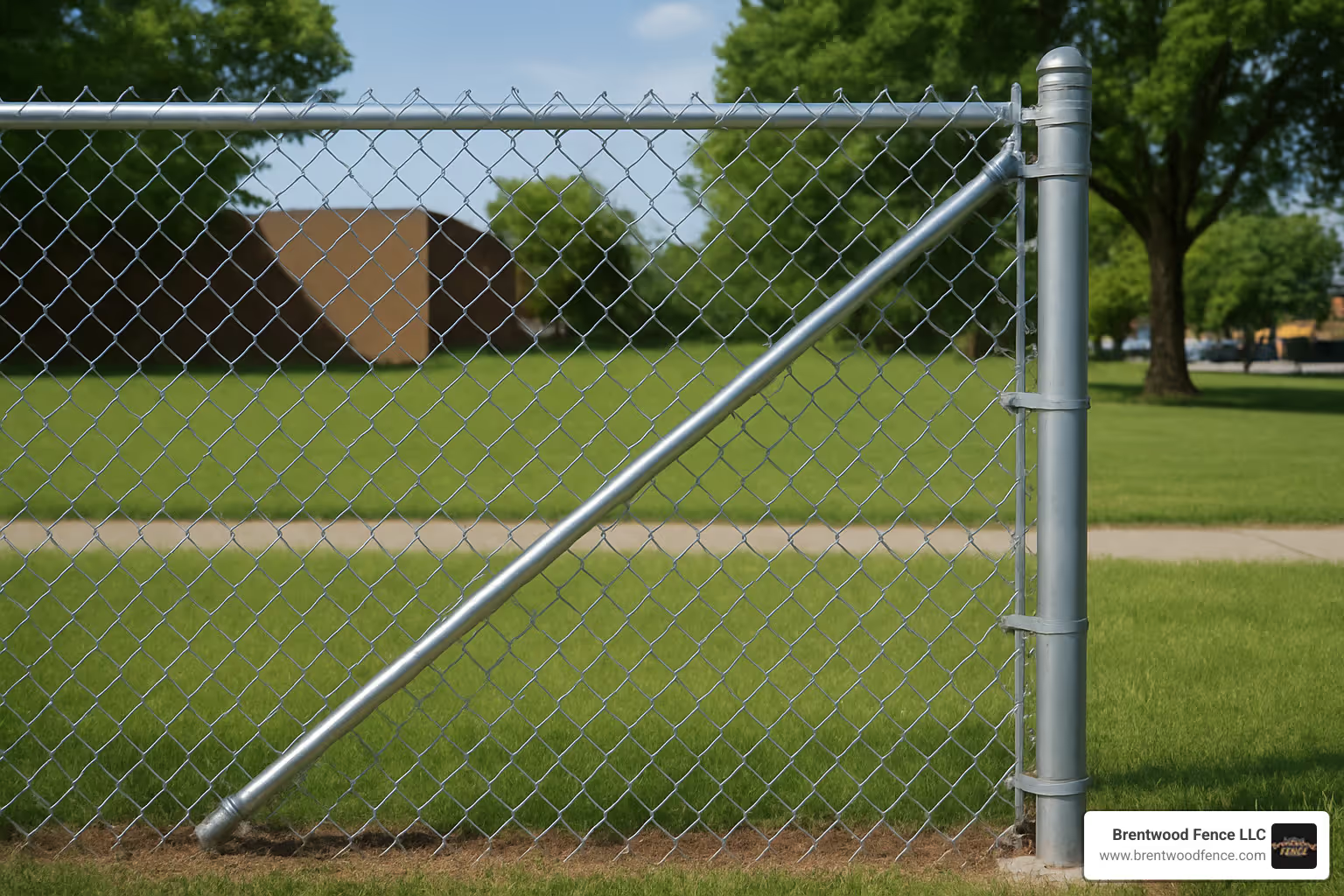
A truss rod chain link fence uses diagonal steel bracing to prevent terminal posts from leaning or failing under tension. Here's what you need to know:
Key Components:
When Required:
Primary Benefits:
If you've ever seen a chain link fence where the corner posts lean inward or gates won't close properly, you're looking at what happens without proper truss rod support. As one experienced installer noted in industry forums: "I saw a trussed fence outperform thicker-post fences on water towers" - highlighting how this simple diagonal brace can outlast even heavier construction.
The physics are straightforward. When you stretch chain link fabric tight, it creates enormous pulling forces on your terminal posts. Without a truss rod to transfer those forces to your line posts, even posts set in large concrete footings will eventually lean and fail.
The bottom line: Truss rods turn your fence from a series of individual posts into a connected structural system that distributes loads properly.
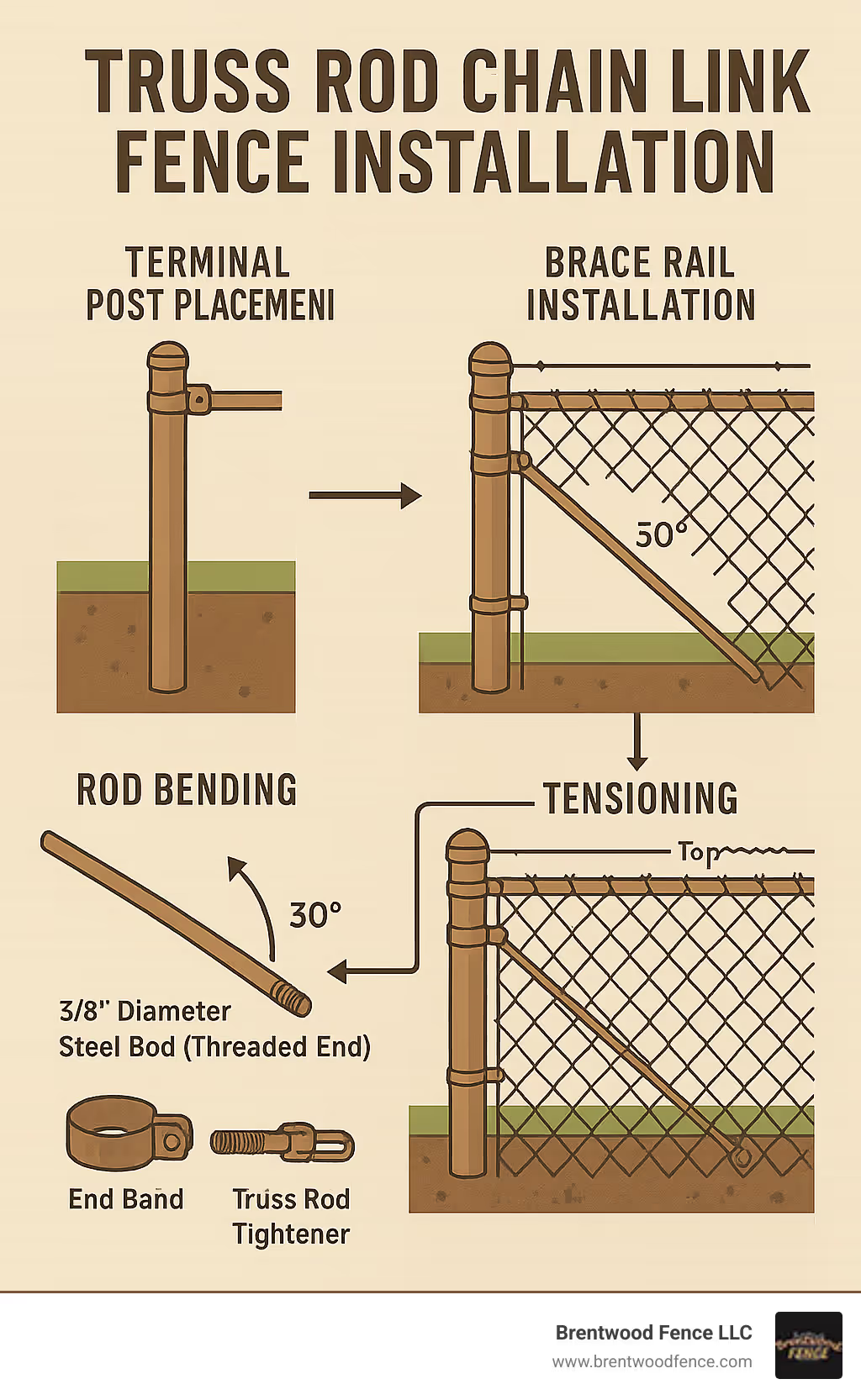
Here's the thing about truss rod chain link fence systems - they're basically the unsung heroes of fence construction. When you stretch chain link fabric tight (and we're talking really tight), it creates massive pulling forces that want nothing more than to yank your corner and end posts right out of the ground.
That's where the diagonal brace comes in. A truss rod creates a simple but brilliant solution: it transfers all those tensile forces from your terminal posts to your stronger line posts through a brace rail system. Think of it as teamwork - instead of one post trying to handle all the stress alone, the whole fence section works together.
The ASTM specs and FHWA code aren't just bureaucratic paperwork either. These standards require truss rods on all terminal, corner, and pull posts when your fence is over 6 feet tall or runs longer than 150 feet. Engineers figured out these requirements by actually calculating the forces involved - and trust me, those forces are no joke.
Most truss rods use 3/8" steel that's been galvanized with Class D zinc coating. You can also get aluminum versions if you're dealing with salty coastal air or other corrosive environments. The standard lengths run from 10.5 feet all the way up to 20 feet, so you can match almost any fence configuration.

A steel rod with a threaded end and nut-turnbuckle setup - that's your basic truss rod. Simple as that. But don't let the simplicity fool you into thinking it's not doing serious work.
The threaded end is the secret sauce here. Just like adjusting a guitar string, you can turn that nut to get the perfect tension. This creates a push-and-pull system where compression vs. tension forces balance each other out perfectly.
The physics behind this system would make your high school teacher proud. It's all about lever-arm physics and creating the right load-path through your fence structure.
When that chain link fabric tries to pull your terminal posts inward, the truss rod says "not so fast" and redirects those forces through the brace rail to your line post. It's like having a friend help you move a heavy couch - suddenly what seemed impossible becomes manageable.
The magic happens because the truss rod is pre-tensioned before you even stretch the fabric. This prevents leaning from day one and provides serious gate-sag mitigation over the years.
You'll need truss rods in several key situations, and ignoring these requirements usually leads to expensive repairs down the road.
Fence height over 6 feet creates more wind load and gives the fabric more leverage to work against your posts. Runs longer than 150 feet accumulate tension forces that can overwhelm even properly set terminal posts. All corners and gates need them because these posts take the full brunt of fabric tension, sometimes from multiple directions.
Wind-zones with severe weather put extra stress on fence systems, and commercial lines using heavier 9-gauge wire create higher tension loads than residential installations can handle without proper bracing.
Building a proper truss rod chain link fence is like assembling a well-designed machine - every component needs to work together perfectly. You can't just grab any old rod and expect it to hold up your fence for decades.
The heart of the system is the truss rod itself, but it's supported by several other critical pieces. You'll need a truss rod tightener (think of it as a heavy-duty turnbuckle), a brace rail to connect your posts, end bands to secure everything, and rail ends to finish the connections properly.
Here's where material choice really matters. Most installers reach for galvanized steel because it offers the best balance of strength, cost, and availability. But if you're near the ocean or in an industrial area with harsh chemicals, aluminum might be worth the extra investment.
The tightener is where you'll see the biggest price variation - from around $3.47 for basic pressed steel up to $15.13 for premium aluminum units. Don't skimp here. A cheap tightener that fails will cost you far more in repairs than buying quality hardware upfront.
The industry has settled on 3/8" diameter as the sweet spot for truss rods. It's strong enough to handle the loads but not so thick that you need special tools or hardware. You'll find rods in lengths from 10.5 feet for basic residential corners all the way up to 20 feet for major commercial and highway projects.
Most residential jobs use the 11-foot length - it handles typical post spacing with room for the 30-degree bend you'll need during installation. For taller fences over 8 feet, step up to the 12-foot option to ensure you have adequate reach.
The standard Class D zinc galvanizing provides serious protection - we're talking about 610 grams of zinc per square meter. That's enough to keep your truss rod system working for 20+ years in normal conditions.
The tightener is where the magic happens - it's your adjustment mechanism for keeping everything perfectly tensioned. Pressed steel tighteners handle most installations just fine and keep costs reasonable. Cast aluminum units are the premium choice when you need maximum corrosion resistance or want the cleanest appearance.
For gates, many installers prefer welded corner assemblies rather than removable tighteners. It creates a bombproof connection, though you'll lose the ability to make easy adjustments later.
Your choice between a structural top rail and top tension wire completely changes how critical your truss rod becomes. A properly installed top rail acts like a beam, providing significant structural support that can reduce stress on the truss rod system.
But when you go with top tension wire (common on highway and industrial jobs), that truss rod becomes absolutely essential. The tension wire creates additional pulling forces without giving you any structural help in return.
Installing a truss rod chain link fence assembly is like assembling a puzzle - every piece needs to fit perfectly, and the order matters more than you might think. The golden rule? Get everything positioned and pre-tensioned before you even think about stretching that chain link fabric.
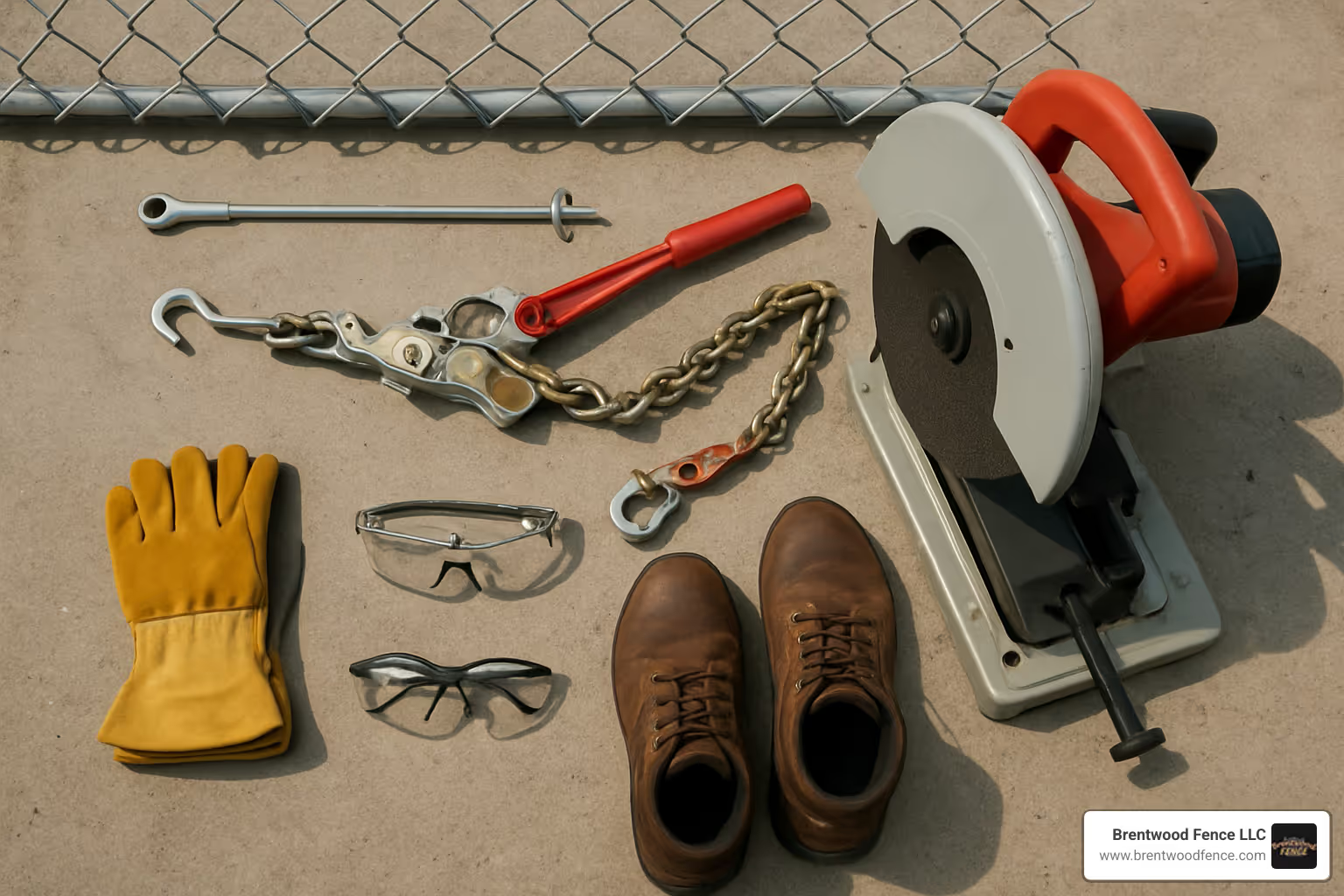
Before we dive in, let's talk safety. Steel components under tension don't mess around - they can snap back with enough force to ruin your whole day. Always wear safety glasses when cutting metal, work gloves when handling steel, and steel-toed boots for any fence work.
Having the right tools makes the difference between a smooth installation and a frustrating afternoon. You'll need a come-along or fence stretcher for fabric tensioning, a speed wrench with 1/2" socket for nuts and bolts, and a chop saw or hacksaw for cutting brace rails to exact length.
Don't forget your 4-foot level - this tool is absolutely critical for checking that posts stay plumb throughout the process. Round out your toolkit with a socket set, wire rake or fence pliers, measuring tape, and a hammer for those inevitable adjustments.
The prep work is just as important as having the right tools. Make sure all your posts are sitting perfectly plumb in properly cured concrete. Terminal posts need to be set at least 24 inches deep with footings sized for your fence height and soil conditions.
Start by installing end bands and rail ends at mid-height on both your terminal post and first line post. Here's where attention to detail pays off - the rail end orientation matters more than most people realize. The rail end on your terminal post should have its open end facing toward the line post, while the rail end on the line post needs its hole positioned at the bottom.
Before you fire up that chop saw, measure the inside cup-to-cup distance between rail ends. This measurement needs to be spot-on accurate. If your brace rail is even slightly too long, it'll force your posts out of plumb when you install it.
Don't forget to install a second end band at the base of your terminal post, positioned as close to ground level as possible. This ground-level band will hold your truss rod brace and is absolutely critical for proper load transfer through the system.
Now comes the fun part - bending and installing the truss rod. You need a precise 30-degree bend to ensure proper engagement with both the rail end and truss rod brace. Slide the rod through the brace first, then mark exactly where it needs to bend to enter the rail end.
Here's a pro tip: make sure you have at least one inch of thread extending above the truss rod brace before you start tightening. This gives you adjustment room and prevents the frustrating scenario where you need to re-bend the rod because you didn't leave enough thread allowance.
The critical moment comes when you're tightening the nut. You want to create slight out-of-plumb - typically about 1/4 to 1/2 inch - on your terminal post. This pre-tension is what will counteract the fabric tension you'll apply later. And here's the most important rule: do not re-tighten the truss rod after stretching the fabric.
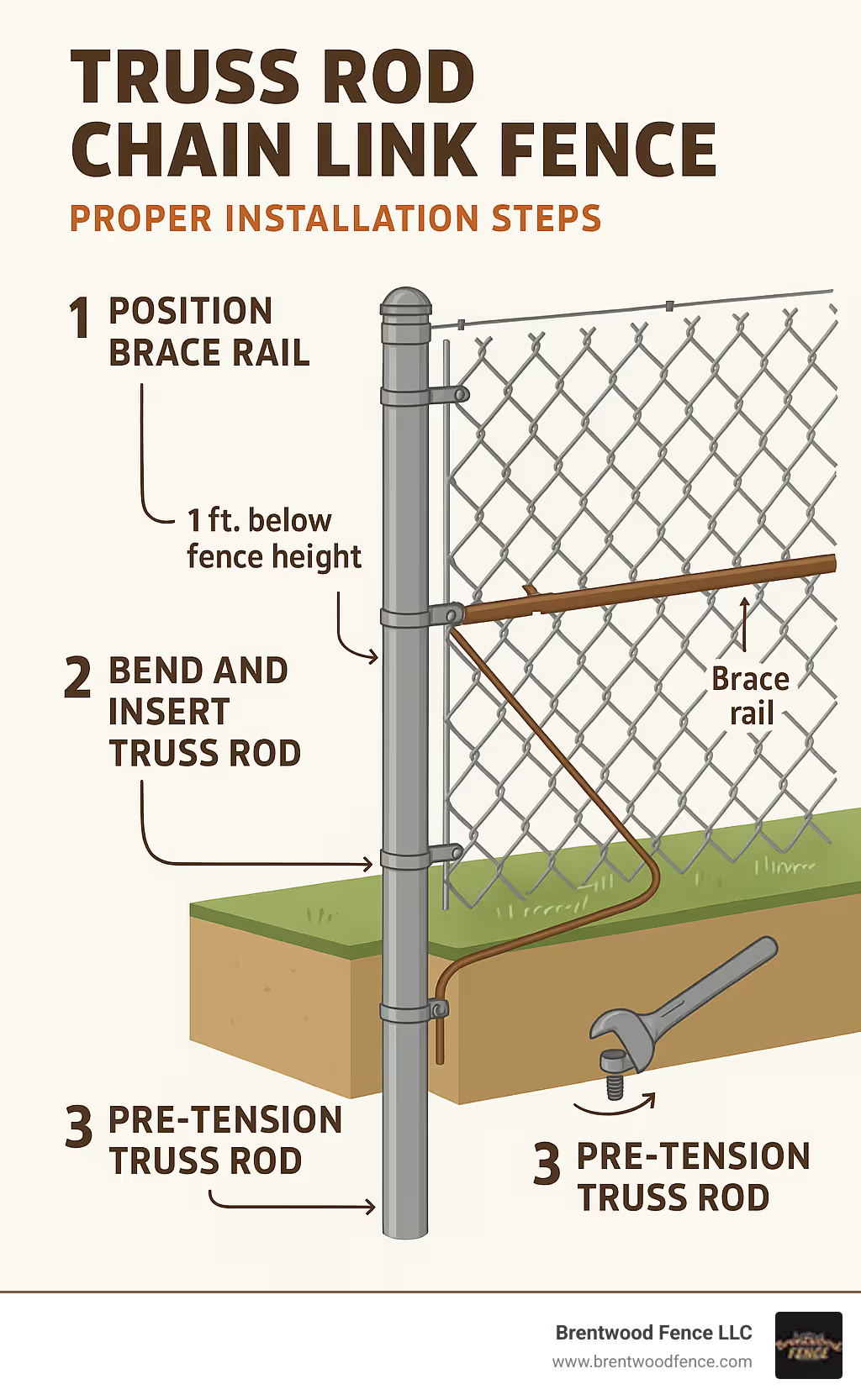
Over-tightening tops the list - whether during initial installation or after fabric stretching. You're creating a pre-load, not trying to set a world record for maximum tension.
Wrong rail length is another classic mistake that seems small but creates big problems. Always measure twice and cut once. A rail that's even half an inch too long will force your posts out of plumb and create stability issues.
Loose bands might seem like a minor detail, but they can allow your entire assembly to shift under load. Tighten all band bolts to snug plus 1/4 turn - tight enough to prevent movement without deforming the post.
Let's be honest - nobody wants to think about maintenance when they're installing a fence. But here's the good news: a properly installed truss rod chain link fence system is surprisingly low-maintenance. The key is catching small issues before they turn into expensive headaches.
Your inspection routine should be simple and quick. Once a year, walk your fence line and check three things: nuts for looseness, rust spots at connections, and whether posts are still standing straight. In coastal areas where salt air is tough on metal, or near industrial sites with harsh chemicals, you might want to do this twice a year instead.
Here's what many people don't realize about costs - while truss rod components do add to your material bill, they often reduce your total project cost. How? Because a properly braced fence with standard posts frequently outperforms an unbraced fence with oversized posts. You're essentially trading a small amount of hardware for much larger concrete footings and heavier posts.
The labor story is a bit different. As one experienced installer put it: "On long commercial runs, truss rods and mid-rails can more than triple the time spent installing a corner." That's real talk from the field. But here's why that extra time is worth it - you'll have far fewer callbacks and warranty issues down the road.
For those of us dealing with New England winters, truss rod systems earn their keep quickly. Our freeze-thaw cycles can be brutal on fence foundations, and the extra stability makes a real difference when spring arrives.
For detailed information about chain link fence materials and professional chain link installation services, these resources can help you understand all your options. You can also learn more about chain link fence construction standards from industry resources.
Sometimes life happens and you need to make adjustments. Maybe that gate isn't hanging quite right, or a post has shifted slightly. The good news is that adjustments are possible - you just need to follow the right sequence.
Step one is always the same: relieve tension on your chain link fabric using come-alongs or fence stretchers. Never try to adjust a truss rod while the fabric is stretched tight.
Once the fabric is loose, use what professionals call the quarter-turn method. Make small adjustments and check your results before going further. A quarter turn of the nut typically moves the post about 1/8 inch, which is usually plenty for minor corrections.
Truss rods aren't the only game in town for fence stability, though they're often the best choice. H-brace systems use two line posts connected by horizontal braces and diagonal wire. They're incredibly strong but more complex to install and require more space.
Heavier terminal posts - think larger diameter with thicker walls - can handle higher loads without additional bracing. The trade-off is larger concrete footings and higher material costs.
When you run the numbers, truss rods usually win the cost-benefit analysis. The additional material cost is modest compared to oversized posts and massive footings.
Here's where things get official. ASTM F567 specifications and FHWA E619-09 standards aren't suggestions - they're engineering requirements based on decades of real-world experience and structural analysis. These standards clearly spell out when truss rods are required.
Your local building codes might have additional requirements, especially in high-wind areas or earthquake zones. Check with your local building department before finalizing your fence design.
Here's the short answer: No, not every chain link fence needs a truss rod. But the longer answer is a bit more nuanced and depends on what you're building.
If you're installing a shorter fence (under 6 feet) with runs less than 150 feet and you're using a properly installed top rail, you might be able to skip the truss rod system. The top rail provides enough structural support to handle the fabric tension in these lighter-duty applications.
However, all corner posts, end posts, and gate posts should have truss rod support regardless of fence height. Why? Because these terminal posts take the brunt of the fabric tension, and without proper bracing, they'll eventually lean inward or pull loose from their footings.
This is a great question that comes up a lot, and the answer isn't as straightforward as you might think. While heavier posts can definitely handle higher loads, they're not always a perfect substitute for a truss rod system.
The key difference is in how forces are handled. A truss rod spreads the load from your terminal post to the nearby line posts - it's like having a team help carry a heavy load. A heavier post, on the other hand, tries to handle all that force by itself.
In many cases, you'll actually get better performance from standard posts with proper truss rod bracing than from oversized posts without any bracing. Plus, it's usually more cost-effective too.
This is probably the most critical adjustment in the entire installation, and getting it wrong is one of the biggest mistakes we see.
Tighten the nut until your terminal post moves slightly out of plumb - we're talking about 1/4 to 1/2 inch. This might seem wrong at first, but this pre-tension is exactly what makes the system work.
When you stretch the chain link fabric later, it will pull that post back to plumb. This creates the perfect balance where your truss rod chain link fence system is under just the right amount of tension to prevent sagging without being over-stressed.
Here's the golden rule: never re-tighten the truss rod after stretching the fabric. Once that fabric is tight, the system is balanced. Additional tightening can strip threads or create weak points that will fail later. Professional NH fence company.
When you step back and look at the bigger picture, a truss rod chain link fence system is really about turning physics into your friend instead of your enemy. Those invisible forces that want to pull your fence posts sideways? The truss rod system redirects them where they can't cause trouble.
Think of it this way - without proper bracing, you're asking each post to be a superhero, fighting those pulling forces all alone. With truss rods, your posts work as a team, sharing the load and supporting each other. That's the difference between a fence that leans and sags after a few years and one that stands straight and strong for decades.
At Brentwood Fence LLC, we've watched too many property owners deal with the frustration of gates that won't close properly and corner posts that lean inward. It's not just about appearance - though nobody wants a crooked fence. It's about getting the performance and longevity you paid for.
The beauty of truss rod systems lies in their simplicity. A steel rod, a tightener, and a brace rail - that's all it takes to transform your fence from good to great. The components are affordable, the physics are proven, and when installed correctly, they just work.
Whether you're securing a backyard for your family or installing commercial fencing for your business, the principles remain the same. Pre-tension before fabric stretching, periodic inspections, and proper component selection - these aren't complicated concepts, but they make all the difference in the world.
Ready to build a fence that will make you proud for years to come? We'd love to discuss your project and show you how proper engineering creates better results. Contact us for a free fencing estimate and let's talk about what's possible for your property.
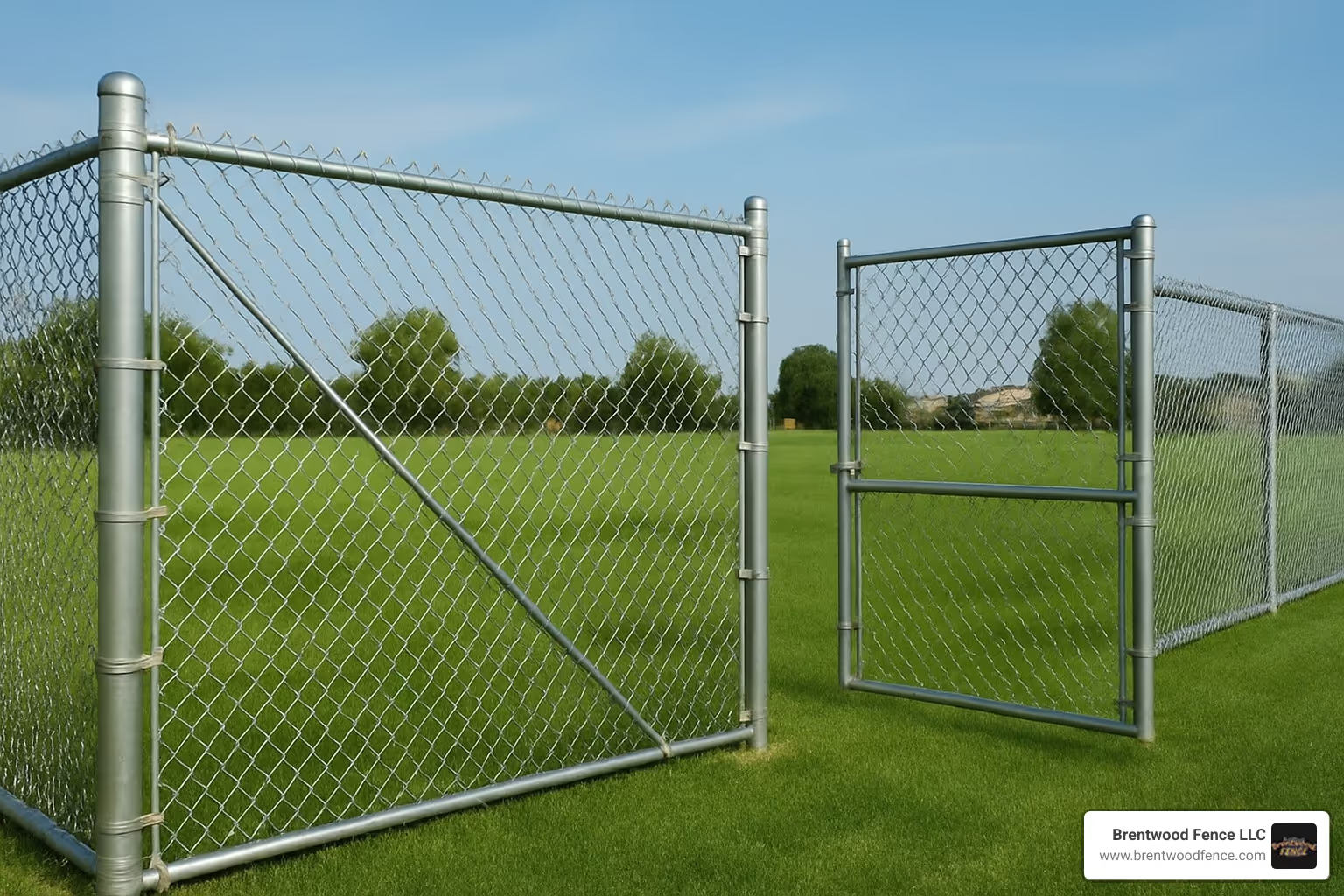
We serve customers throughout New Hampshire, Massachusetts, and Maine with the kind of attention to detail that ensures your fence investment pays off. Because at the end of the day, you want more than just a fence - you want durability, performance, and peace of mind. That's exactly what a properly installed truss rod system delivers.
Copyright 2022 Brentwood Fence | All Rights Reserved | Sitemap | Website by Plumb Development a Digital Marketing Agency